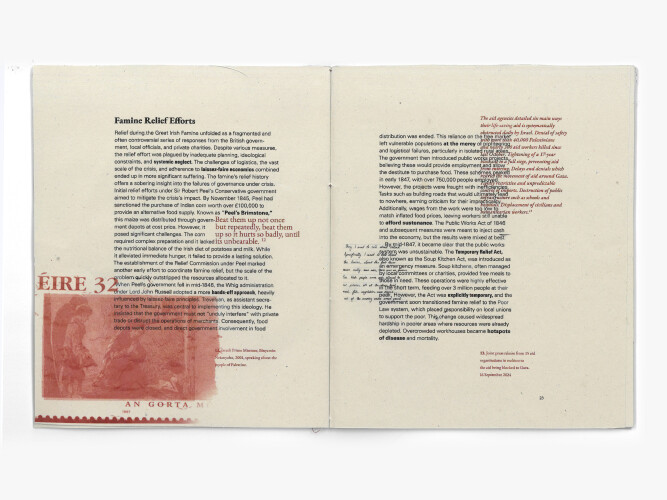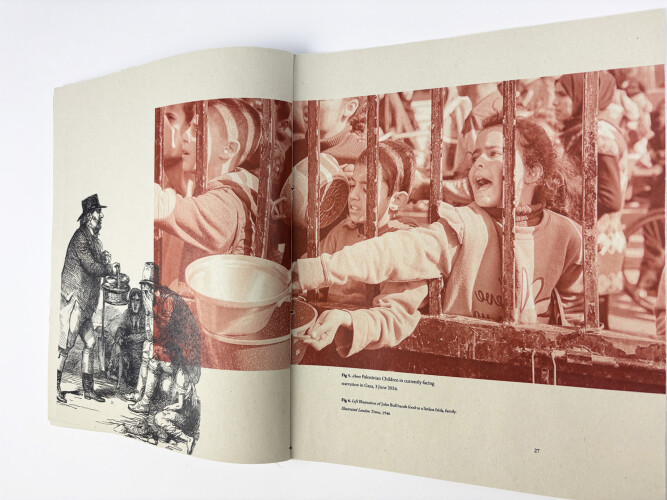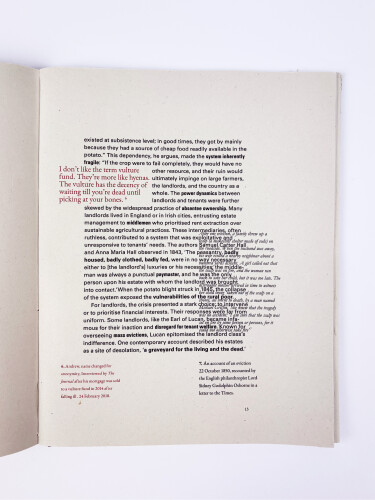The History Book
The History Book is a typographic publication that interrogates how history is constructed, distorted, and repeated through the manipulation of narrative. Centering on the Irish Famine, the work draws parallels between colonial-era propaganda and present-day misinformation. Taking the example of the dehumanization of the Irish as inferior beings and the resemblance it bears to the language used against Palestinians today, and the ongoing Irish homelessness crisis—these narratives are not relics of the past, but patterns repeating themselves in the present. Through layering of conflicting sources, juxtaposing voices, and disruptive typography, the publication resists the notion of a singular objective truth. Historical accounts, personal testimonies, and political rhetoric collide with past and present, exposing how the loudest voices dominate collective memory while others are silenced. Referencing archival materials, schoolbooks, and modern media, the work confronts the viewer with the uncomfortable continuity of systemic neglect.




